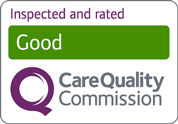10 facts about the morning after pill
- What is the morning after pill?
- When was the morning after pill invented?
- History of the morning after pill
- Types of morning after pill
- 1. What does the morning after pill do?
- 2. When can I use the morning after pill?
- 3. How effective is the morning after pill?
- 4. What are the side effects of the morning after pill?
- 5. Does the morning after pill delay your period?
- 6. Does the morning after pill affect fertility?
- 7. Does the morning after pill cause an abortion?
- 8. Does the morning after pill protect you from STIs??
- 9. Where can I get the morning after pill?
- 10. Can I get the morning after pill in advance?
- Other forms of emergency contraception
Reviewed by our clinical team
Sometimes sex can be unpredictable. The heat of passion can lead couples to ‘act’ before they think, and no one can predict the durability of a condom or whether it may split.
Fortunately, even when traditional forms of contraception such as condoms fail, there are still options available. In this article we’ll explore the facts you need to know about the morning after pill.
What is the morning after pill?
The morning after pill is a way of preventing unwanted pregnancy after unprotected sex. It's the most common form of emergency contraception, and is also known as the emergency contraceptive pill (sometimes known as plan B).
It’s taken up to five days after unprotected sex (depending on the type you take) and can be up to 98% effective.
When was the morning after pill invented?
In the 1920s researchers initially demonstrated that oestrogen ovarian extracts interfere with pregnancy in mammals. The findings were first applied by veterinarians. As a form of contraception, the vets administered the oestrogen to dogs and horses that had mated against the wishes of their owners. To find out just how far this little pill has come over the past century, read on.
History of the morning after pill
Although the contraceptive pill has been available for over 50 years in the UK, women had to wait until 1984 until the first licensed morning after pill was launched in Britain. Early trials in the 1970s used high doses of oestrogen, taken over five days, to prevent unwanted pregnancies. This was before researchers discovered that a combination of oestrogen and progestogen was safer. By 2000, they’d decided that a progestogen-only emergency contraceptive pill was the best option and Levonorgestrel (sometimes known as the brand Levonelle) became available. By 2001, it was available to buy from UK pharmacies.
Morning after pills designed to be taken within 72 hours of unprotected sex have been available from pharmacies for some years now, with a five-day emergency pill called ellaOne only available from GPs and family planning clinics. However, in 2015, the European Union changed the status of this 5-day emergency pill so that, it can be bought from chemists across the UK without a prescription – just like the other emergency contraceptive pills.
Types of morning after pill
There are two types of morning after pill available in the UK, Levonorgestrel and ellaOne.
Levonorgestrel
Levonorgestrel, sometimes known as Levonelle, contains the active ingredient levonorgestrel. Generally, you take one tablet, but some women might need to take two. This is dependent on your weight and other medications you might be taking (for example HIV treatment).
ellaOne
ellaOne can be taken up to five days (120 hours) after having unprotected sex. You take just one tablet. Some women might not be suitable for this treatment, for example if you’re taking certain HIV treatments.
1. What does the morning after pill do?
The morning after pill can prevent pregnancy, but it works best the quicker you take it after having unprotected sex.
How does the morning after pill work?
There are many myths surrounding how exactly the morning after pills work. Both the Levonorgestrel and ellaOne morning after pills work by having an effect on ovulation (the release of an egg). These pills delay or prevent the release of an egg. The hormones contained in the pills can also affect the lining of the womb, making it harder for an egg to attach.
2. When can I use the morning after pill?
The name ‘morning after pill’ can lead to some confusion, as neither brand of pill must literally be taken the morning after unprotected sex to be effective.
- Levonorgestrel can be taken up to 72 hours (three days) after unprotected sex and still prevent pregnancy.
- ellaOne can be taken up to 120 hours (five days) after unprotected sex and remain effective.
However, Levonorgestrel should be taken as soon as possible after unprotected sex. The sooner it's taken, the more likely it is to be effective.
3. How effective is the morning after pill?
No morning after pill is 100% effective, the quicker you take it, the better it will work.
Vomiting or having diarrhoea within a few hours of taking either pill could affect its ability to prevent pregnancy, as your body may not absorb the entire dose. If this occurs, you are advised to talk to your GP as you may need to take the pill again.
Levonorgestrel effectiveness
Levonorgestrel, can be taken up to 72 hours after unprotected sex. It’s thought to be:
- When taken within 24 hours, it is 95% effective
- When taken within 48 hours, it is 85% effective
- When taken within 72 hours, it is 58% effective
ellaOne effectiveness
ellaOne can be up to 98% effective and can continue to prevent pregnancy for up to 120 hours after unprotected sex.
Does the morning after pill always work?
No method of contraception is 100% effective even the morning after pill. Taking it as early as you can help, however ellaOne is still effective up to 5 days after sex.
However, some women will become pregnant even after using the morning after pill. Find out more about how effective the morning after pill is.
4. What are the side effects of the morning after pill?
There are no serious side effects, but some women may experience:
- Stomach ache
- Nausea
- Vomiting
- Tiredness
- Headache
- Dizziness
- Irregular menstrual bleeding
5. Does the morning after pill delay your period?
Some women who take Levonorgestrel or ellaOne find that their period comes earlier or later than usual. If this happens there is normally nothing to worry about.
If your period is more than seven days late, shorter, heavier or lighter than usual, or you experience any sudden or unusual pain in your lower abdomen, you should see a doctor immediately and take a pregnancy test.
6. Does the morning after pill affect fertility?
No, the morning after pill does not affect fertility and there is no delay in return to fertility.
How many times can you take the morning after pill?
You can take the morning after pill more than once in a menstrual cycle, and there’s no limit on the number of times it can be taken in total. However, it’s not advised you use the morning after pill as a regular form of contraception, it should only be used in an ‘emergency’ situation.
7. Does the morning after pill cause an abortion?
No, the morning after pill does not cause any kind of abortion. Morning after pills primarily work by preventing or delaying ovulation and fertilisation in the first place.
Levonorgestrel is a synthetic version of the hormone progesterone, which prevents ovulation, and ellaOne contains ulipristal acetate which stops progesterone working normally, preventing or delaying ovulation. Both pills may also cause changes in the lining of your womb which make it difficult for an egg to implant.
8. Does the morning after pill protect you from STIs??
No, neither Levonorgestrel nor ellaOne protect against sexually transmitted infections like chlamydia, gonorrhoea and herpes.
If you think you may have picked up an STI, through unprotected sex, you should consider getting tested even if you don’t have any symptoms. Ask your GP or local sexual health clinic about this, or order a test kit through our discreet online service.
9. Where can I get the morning after pill?
Your GP or family planning clinic can prescribe the morning after pill, and you can buy Levonorgestrel over the counter at a pharmacy. We also offer both Levonorgestrel and ellaOne through our online service.
Find out more about where you can get the morning after pill.
10. Can I get the morning after pill in advance?
It is possible to use our service to get the morning after pill if you think you might have unprotected sex. As it is important to take the morning after pill as soon as possible after unprotected sex. Getting the morning after pill in advance can be helpful for preventing pregnancy.
Despite this, you should not rely on the morning after pill as a method of routine contraception. Find out more about whether the contraceptive pill is right for you.
Other forms of emergency contraception
Three types of emergency contraception are available in the UK:
- the copper coil (IUD)
- ellaOne
- Levonorgestrel (Levonelle)
The emergency coil is more effective than the morning after pill (99% effective if fitted within 5 days), but you will have to visit your GP or local family planning clinic to get it fitted. It’s a copper device which is inserted into the uterus where it works by preventing fertilisation and the egg from implanting in the womb. It can also be used as a form of long-term contraception. Once inserted, it can be left in place for 5-10 years.
Conclusion
The most important fact to know about the morning after pills is when you need to take them. While Levonorgestrel can be taken up to three days after unprotected sex, ellaOne is effective for up to five days following sex without a condom.
To learn more, visit our online service, where you can get an emergency contraception consultation from one of our clinicians.
References
https://www.tht.org.uk/hiv-and-sexual-health/sexual-health/improving-your-sexual-health/contraception/emergency
https://www.nhs.uk/conditions/contraception/emergency-contraception/
https://www.who.int/news-room/fact-sheets/detail/emergency-contraception





